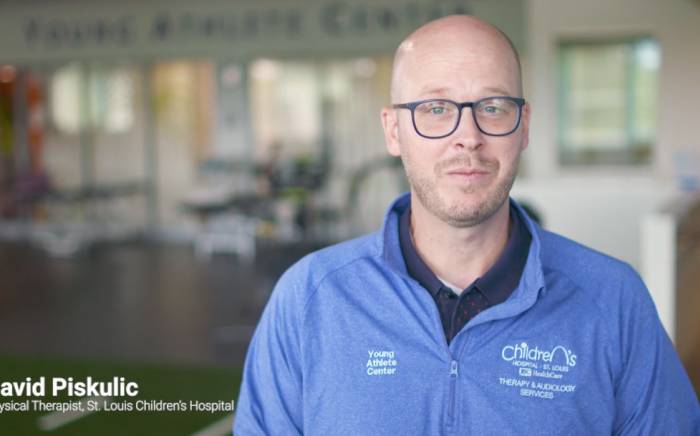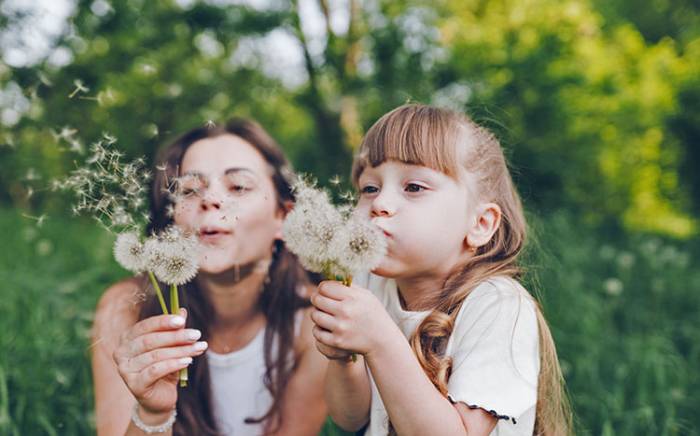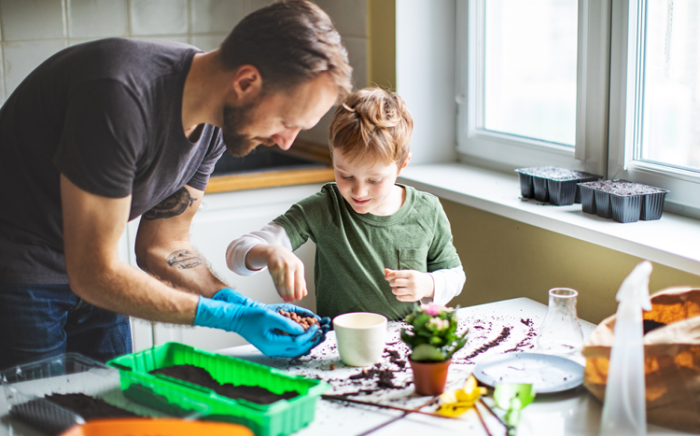The first year of a child’s life is an amazing time of rapid physical and developmental growth. A baby’s first weeks are devoted mostly to adjusting to life – eating, sleeping and feeling comfortable are his primary interests. By the end of the year, however, the child is practicing new skills, actively exploring his world and learning his role in it.
There are many ways in which parents can help their infant enjoy life and grow during these months.
While the ages at which normal infants reach milestones vary greatly, this brochure provides some tips on what to watch for and how to participate in the stages of development.
Birth to 6 weeks
What to expect:
- The baby is adjusting to life rather than experiencing growth. He will be sleepy most of the time and fussy when something disturbs his sleep or comfort.
- The baby is hypersensitive to changes in light, sound or handling, but likes to be cuddled.
- He will soon begin to recognize familiar people and will reward parents with his first smile.
Parents can participate by:
- Responding to cries quickly, holding him and talking to him to provide a feeling of security.
6 weeks to 3 1/2 months
What to expect:
- Motor skills begin to develop rapidly as the baby learns about herself and her surroundings by touch and imitation. The baby is developing body and head control; arm, leg and neck muscles become stronger as they are exercised.
- Baby becomes sociable and enjoys watching faces and being touched.
- Baby will start making vowel sounds around 8 weeks.
Parents can participate by:
- Stimulating baby’s curiosity and eye-hand coordination by giving her a variety of toys to look at and handle.
- Placing the baby on her stomach to help her learn to lift and control her head.
- Sitting her nearby in her infant seat while you eat. A baby enjoys being included in your meals.
- Laying her on her back and gently bending her knees and stretching and folding her arms to help her learn muscle control.
- Shaking a rattle above her head and rewarding her with a kiss when she reaches for it.
- Guiding the baby’s hand to help her explore textures, such as her blanket or your face and hair.
3 1/2 to 5 1/2 months
What to expect:
- The baby enjoys exercising his large muscles and practicing new motor skills. A baby may begin to turn from his back to his stomach at this time.
- While on his stomach the baby will hold his head up for longer periods. At about 12 weeks he will hold his head up when in a sitting position.
- He will be interested in exploring everything within reach and gradually will gain the ability to see something and reach for it.
- At 4 months the baby may begin laughing.
Parents can participate by:
- Using an infant seat to keep the baby near as you work about the house, providing changes of scenery and stimulation.
- Providing the baby with plenty of objects to practice visually directed reaching (the ability to see something and reach for it).
5 1/2 to 8 months
What to expect:
- The baby becomes increasingly alert, active and responsive.
- The baby’s curiosity will draw her to everything she can see and hear. She will discover that she can affect objects by throwing, banging and dropping them.
- Pushing and pulling with her arms and legs becomes fun and the baby learns to sit up, roll, scoot and crawl.
- By now a baby is attracted to sounds and voices. She will show the first signs of imitative behavior at 6 months, but is wary of strangers.
Parents can participate by:
- Assisting the building of motor skills by providing objects which have no sharp edges or small parts and are slightly larger than the baby’s fist so they cannot be swallowed.
- Tickling the baby’s feet to encourage her to kick her legs and laugh
- Making interesting noises to encourage the baby to gurgle and imitate them. Say “brr” and flap your lips.
- Talking and reading stories to prepare the baby for learning language skills later.
- Hold a mirror in front of her face and ask, “Who is that?” Point to her image and call her by name.
8 months to 1 year
What to expect:
- During these months a baby will learn to pull himself up, cruise along furniture while standing and probably walk.
- Babies will come to have favorite activities and favored places for doing them.
- At 8 months a baby will begin to recognize his name and start making repetitive consonant sounds.
- Climbing stairs and furniture helps satisfy curiosity. However, exploratory tendencies are not accompanied by concern for accidents or problems.
Parents can participate by:
- Making sure the child’s environment is accessible, interesting and – most of all – safe. Adults must be constantly watchful of the child’s safety.
- Distracting the baby from unacceptable or dangerous behavior by leading him to another activity.
- Helping the baby experience the differences between round and square objects, such as balls and small cereal boxes. Name the shape as he touches each object.
- Beginning work on language development. Describe things that are happening and read books and nursery rhymes. Imitate sounds the child makes and encourage him to imitate yours.
- Naming animals and objects in picture books and magazines while asking the baby to point at them. Ask the baby, “Show me the cat! Which one is it?”
- Exposing the baby to various noises and pointing out who or what is making each noise – bird, cat, dog, car, water – and encouraging him to repeat the word and sound after you.
This information was provided by the Child Development Center at St. Louis Children’s Hospital.








